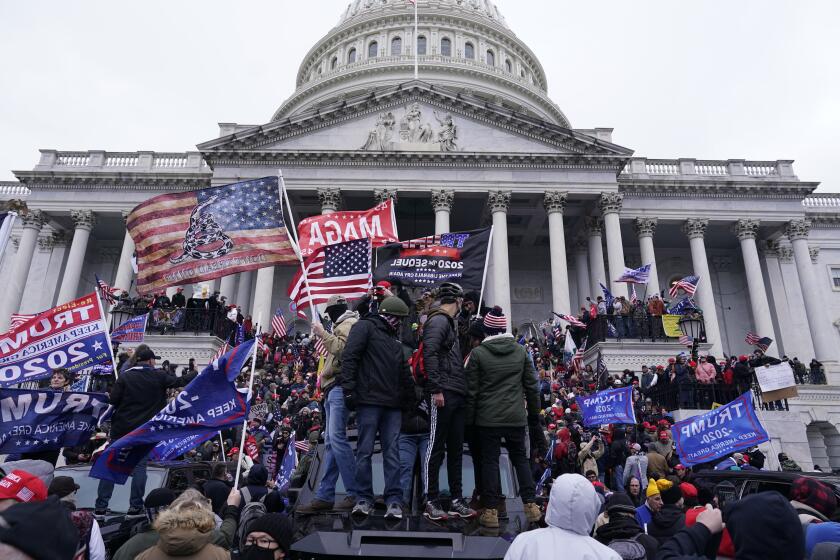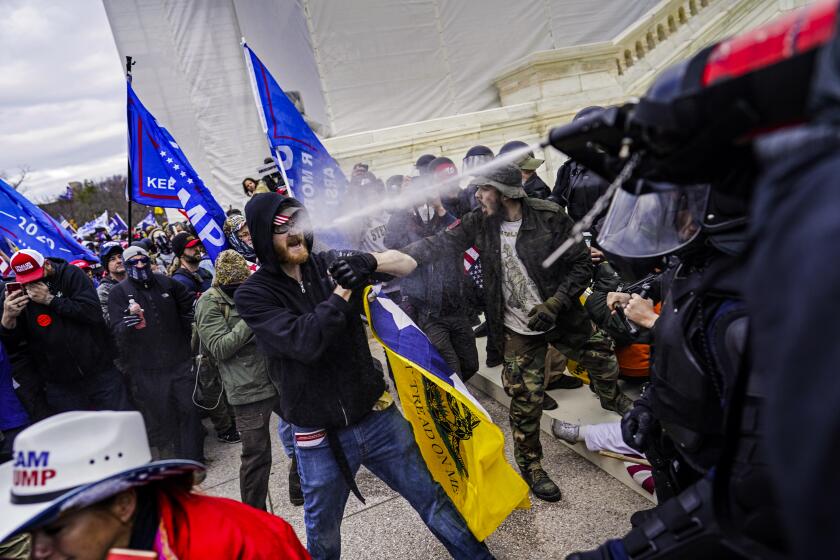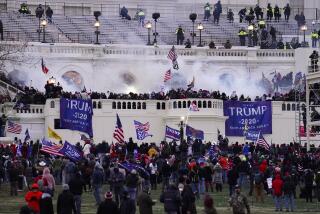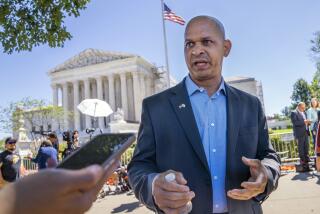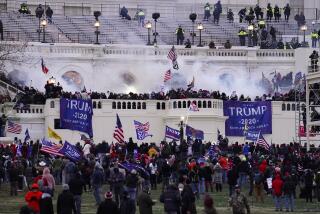Column: Jan. 6 is not a political Rorschach test. It is a flashbulb memory, fixed and irrevocable
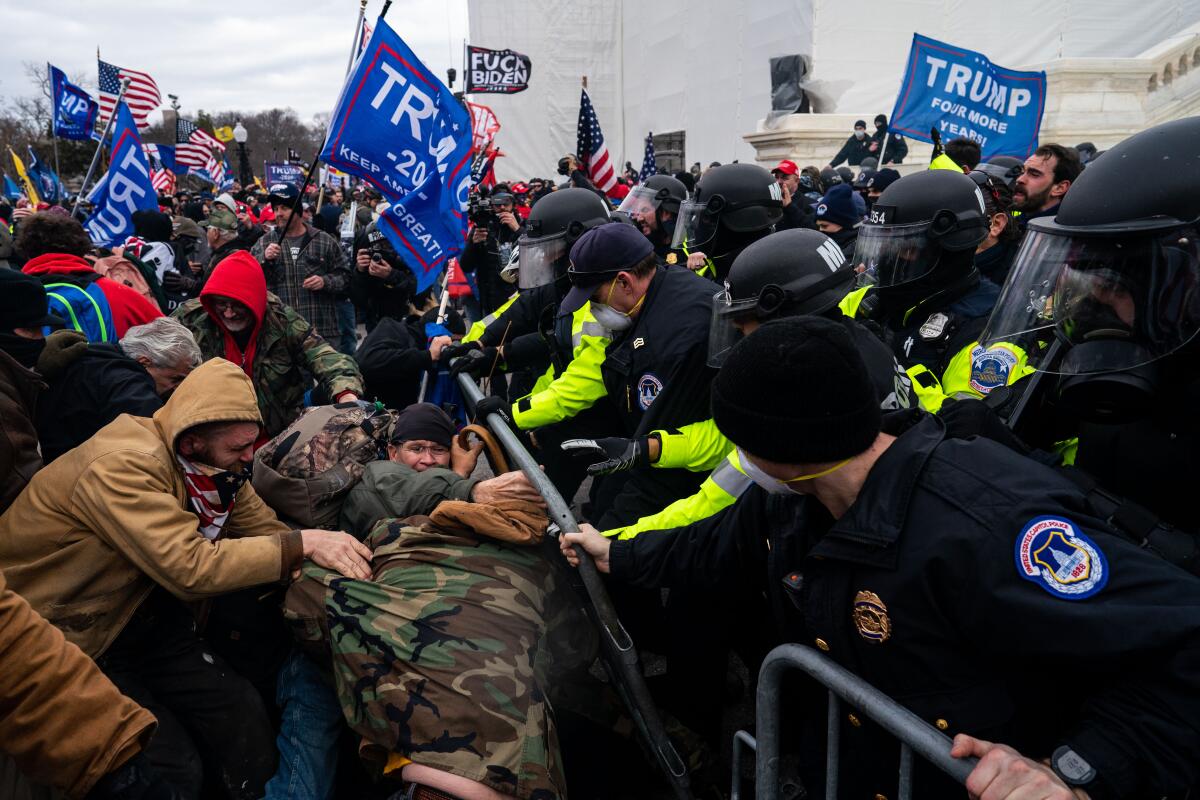
Like many, I will remember forever where I was when the Challenger exploded, when Timothy McVeigh bombed the Alfred P. Murrah Federal Building, when the L.A. riots began, when the Twin Towers fell and when Adam Lanza killed 20 children and six staff members at Sandy Hook Elementary.
And now, like many, I will remember forever where I was the day then-President Donald Trump incited a mob of armed supporters who then stormed the United States Capitol for the purpose of overturning the fair and democratic election of President Joe Biden. Although Jan. 6, 2021, did not result in a massive loss of life, the threat it posed to our government, physical and spiritual, made it a flashbulb memory just as vivid.
“Flashbulb memories” are what we call these crystal-clear recollections of autobiographical details surrounding cataclysmic events. Though the term feels outdated in this digital age, there is no video equivalent of the searing flash and crackling pop once required to fix an image into collective memory. A flashbulb was always startling, imprinting itself on the eyes of its subject, reminding them that their image, this moment was now in some way permanent.
Jan. 6, 2021, is now permanent, a fixture on this country’s — and the world’s — timeline. A year later, memories of the day still ache and chatter hot and cold like a fever, and has there ever been a time when we were more aware of the perils of a fever?
That day I was at home, like most people, hunkered down in the middle of California’s first winter COVID-19 surge watching coverage of the formal election count intercut with scenes from Trump’s inciting rally.
After a pandemic-prolonged election filled with all manner of conspiracy theories and rhetorical tea-leaf reading from both sides, I was exhausted. Like many, I believed the rally would be raucous and paranoid but peaceful. Like many, I believed that those members of Congress who had pledged to object to the election results were doing it as theatrical appeasement; neither they nor Vice President Mike Pence had reason or authority to actually halt the transfer of power.
My screen was set to PBS because, quite frankly, I could not bear another moment of political commentary — I just wanted to see what happened.
And I did.
On Jan. 6, 2021, an insurrection unfolded at the U.S. Capitol when a mob stormed the building while lawmakers voted to certify the electoral college results and Joe Biden’s victory.
As reports of the rally moving down the National Mall became increasingly uneasy, I heard Lisa Desjardins remain magnificently calm as she detailed what she was seeing to anchor Judy Woodruff: protesters swarming up the steps, climbing up walls, assailing the Capitol’s doors, breaking the first window. I heard her voice quaver just a bit when she described the lone security guard who stood between “protesters” and the front door, the door being forced open, the single police officer trying to keep them out. I watched the normally unflappable Woodruff shake her head in disbelief as the reporter described the mob flooding into the building. Soon Desjardins had moved to another point in the building and continued reporting while crouching behind some sort of desk.
While these two women remained unbelievably cool and professional, I, like millions of Americans, was absolutely losing my mind. The images of American citizens battering Capitol Police officers, breaking windows and forcing doors, swarming with obvious violent intent into the seat of American government felt more like some dystopian television series than reality; watching one man repeatedly strike someone with the end of an American flag, I thought for a minute he might bare his teeth to reveal fangs.
But this was worse than some rage pandemic accidentally released from a secret lab; these were ordinary people infected with nothing more than politicians’ lies and a belief they could do whatever they wanted to achieve their ends.
“Stop calling them protesters,” I screamed, as if semantics were the problem, because I didn’t know what else to do. I was shocked and furious and terrified — for Desjardins, who I feared would be harmed before my eyes; for my colleagues and other journalists I knew were in the middle of the fray; for the police having their riot shields yanked away and turned against them; for all the members of the House and Senate, racing to safety; even for Mike Pence, who supported the man who had summoned this mob only to have it turn on him.
And for this country. Because for several hours on that day, I did not know for certain that our government would survive.
Suddenly it seemed possible that we would see Mike Pence hanged or a member of Congress shot on national television. Along with people in Trump pom-pom hats were others wearing body armor, carrying zip ties and weapons. A gallows had been erected outside the building; pipe bombs and Molotov cocktails were discovered at surrounding sites.
The most disturbing footage did not surface until hours or days later — my colleague Kent Nishimura recently posted new and disturbing video from that day — but even with the broken images coming to us live, it was almost impossible to take in what was happening: the savage shiver of shoulders beating against riot shields, doors, human bodies; the animal howls of triumph when the doors were breached; the rabble streaming up and down stairways hunting members of Congress. “Our house,” they chanted, snapping pictures like every terrorist and coup instigator ever.
Never-before-seen footage of the chaos during the Jan. 6 attack on the U.S. Capitol, from Los Angeles Times photographer Kent Nishimura’s GoPro.
Any belief that the political divisions in this country stem simply from two opposing views of American democracy died on Jan. 6. The people who stormed the Capitol, who defecated in corridors and rifled through papers, broke down doors and took selfies while police lay on the ground bleeding and members of Congress fled for their lives were not — are not — interested in democracy. They want at best an oligarchy and at worst a dictatorship.
This group includes not just those thousands who attacked the Capitol but the millions of Americans who have made it very clear that they share their contempt for democracy. This group includes, especially, those who would now have us believe that what happened that day wasn’t so bad.
In the months that followed that day, people like Rep. Andrew Clyde (R-Ga.) and Rep. Jody Hice (R-Ga.) have tried to downplay what happened. As if the day’s horrors had not been captured by countless cameras, as if the people involved hadn’t gleefully shared what they had done on social media only to be shocked when reminded it was a crime.
In the months that followed that day, others have tried to justify the mob’s actions by explaining that they had been told the election was stolen by the president, certain members of Congress and various media commentators. Many Republicans still believe it. The spreaders of the Big Lie have a lot to answer for and they should all be held accountable. But those who choose to believe a lie, in the face of mountains of contradictory evidence, are not seeking truth or justice; they are seeking domination and revenge.
No one likes it when the person they voted for loses an election. The bitterest losses come when a candidate gets the most votes but loses the electoral college, something that has happened twice in my lifetime to Democrats. When Al Gore lost to George W. Bush by way of the Supreme Court, no one stormed the Capitol. When Hillary Clinton lost to Trump even though she had received more than a million more votes than he had, no one stormed the Capitol. There were protests, dozens of them, mostly peaceful, at which the most shocking event was the rise of the pussy hat.
On Jan. 21, 2017, a women’s march organized in part to protest Trump’s election drew hundreds of thousands of people to downtown Los Angeles. I remember the thunder of their feet as they passed The Times building. I remember worrying because my teenage daughter was among the crowd. I had given her a laundry list of warning signs that she should leave the march: breaking glass, shoving, smoke, weapons, a crowd surge or even just an ominous shift in the mood.
Annette Gordon-Reed, Ayad Akhtar, Héctor Tobar, Martha Minow, David Kaye and Jonathan Rauch discuss the Jan. 6 riot and what we do about it.
Many of the protesters were very angry and felt they had a right to be, but there was no violence, no destruction of property. There wasn’t even that much litter. Even more amazing was the patience with which everyone sat in the hours-long gridlock after the event was over.
So you can be angry, you can feel robbed, you can call into question the electoral system and even its results in a way that still honors democracy.
What happened on Jan. 6 is not a political Rorschach test, open to interpretation. Anyone who tries to sell that notion does not believe in democracy. If you saw the same scenes in a movie or television series, you would know instantly what was going on: A mob of armed militia members and middle-aged moms, skinheads and yoga instructors, called up by a still-sitting president, attempted to forcibly keep him in power. And they did their best. That their best wasn’t good enough does not make the attempt less than what it was.
Neither does the passing of a year, or 10 years, or a hundred. The sudden flash and crackle pop of Jan. 6 was not literal, but it is burned into our eyes and memories just the same.
More to Read
The biggest entertainment stories
Get our big stories about Hollywood, film, television, music, arts, culture and more right in your inbox as soon as they publish.
You may occasionally receive promotional content from the Los Angeles Times.
